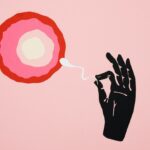Priapism
OVERVIEW
A normal erection occurs in relation to sexual stimulation. It often lasts till the end of sexual arousal or intercourse. However, when an erection lasts for more than four hours and is not related to sexual stimulation, it most often could be an underlying medical condition. This condition which often leads to persistent and sometimes painful erections is known as priapism.
What then is priapism?
DEFINITION
Priapism is a prolonged and often painful erection of the penis. It causes blood in the penis to become trapped and unable to drain through the penile arteries.
Although priapism is an uncommon condition overall, it occurs commonly in certain groups, such as people who have sickle cell anemia. It is often unrelated to or continues long beyond sexual activity. It can be a serious condition due to the risk of permanent tissue damage.
Most clinicians consider priapism a medical emergency because the condition can result in impotence, sexual dysfunction and penile infection.
ETIOLOGY
An erection normally occurs in response to physical or psychological stimulation. Priapism results from abnormalities of blood vessels, red blood cells or nerves that cause blood to become trapped in the erectile tissue of the penis. Sometimes the cause is unknown. Below are the causes of priapism:
Blood Disorders
Blood-related disease might contribute to priapism – usually ischemic priapism, when blood is not able to flow out of the penis. These disorders include:
- Sickle cell anemia
- Leukemia
- Thalassemia
- Multiple myeloma and other hematologic disorders.
The most common cause of priapism in children is due to sickle cell anemia.
Prescription Medications
Priapism, usually ischemic priapism, is a common side effect of a number of drugs including:
- Antidepressants such as fluoxetine, bupropion and sertraline
- Penile injections used to treat erectile dysfunction such as alprostadil, papaverine, phentolamine and others.
- Alpha blockers including prazosin, terazosin, doxazosin and tamsulosin
- Antipsychotic medications such as hydroxyzine, risperidone, olanzapine, lithium, clozapine, chlorpromazine and thioridazine
- Blood thinners such as warfarin and heparin
- Hormones such as testosterone or gonadotropin-releasing hormone
- Medications used to treat attention-deficit/hyperactivity disorder (ADHD) such as atomoxetine.
Alcohol and drug use
Ischemic priapism, can occur from the use of alcohol, marijuana, cocaine and any other illicit drug.
Injury
A common cause of non-ischemic priapism – a persistent erection caused by excessive blood flow into the penis – is trauma or injury to your penis, pelvis or perineum, the region between the base of the penis and the anus.
Other factors related to priapism included:
- A spider bite, scorpion sting or other toxic infections
- Metabolic disorders including gout or amyloidosis
- Neurogenic disorders such as spinal cord injury or syphilis
- Cancers involving the penis
EPIDEMIOLOGY
The frequency of priapism varies in different populations. In the western world, agents used to treat erectile dysfunction are the leading cause of adult priapism. The overall rate of priapism in persons using these agents ranges from 0.05-6%. This group tends to be better educated about the risk of priapism; therefore, they seek early treatment.
In other population groups, sickle cell disease (SCD) and sickle cell trait predominate as the leading cause of adult priapism. This is particularly seen in the African and African-American population. The rate of priapism in adults with SCD is as high as 89%. In a recent study, 38-42% of adult males with SCD reported at least one episode of priapism.
In the pediatric population, about two thirds of all pediatric patients with priapism also have SCD. The rate of priapism among children with SCD is as high as 27%. Internationally, priapism is almost exclusively a disease of males. However, rare cases of clitoral priapism have been reported.
PATHOPHYSIOLOGY
The penis is composed of three cylindrical spaces (sinuses) of tissue through which blood can flow (known as erectile tissue). The larger two sinuses, the corpora cavernosa, occur side by side. The third sinus (the corpus spongiosum) surrounds the urethra and ends as the cone-shaped end of the penis (glans penis). When these sinuses fill with blood, the penis becomes larger and rigid (erect). Muscles then tighten around the veins of the groin, preventing blood from flowing out of the penis and keeping the penis erect.
- Ischemic priapism: Most cases of persistent erection involve failure of blood to flow out of the penis. Blood backs up, preventing new oxygen-rich blood from entering the penis. As a result, the penis can become starved of oxygen. This condition is known as ischemic priapism or low flow priapism.
Severe pain occurs if an erection lasts longer than 4 hours. The penis may be erect while the glans penis may be soft. Prolonged priapism can cause erectile dysfunction or even death of the penile tissue.
- Stuttering priapism: A recurring form of ischemic priapism in which episodes of erection alternate with periods when the penis is not erect.
- Non-ischemic priapism: Less common as compared to ischemic priapism. This is due to uncontrolled flow of blood into the penis. Such abnormal blood flow usually results from an injury to an artery in the groin area. Non-ischemic priapism is also called high-flow priapism. It is less painful than ischemic priapism and does not lead to tissue death. The penis is erect but not fully rigid. Subsequent erectile dysfunction is much less common than in ischemic priapism.
SIGNS AND SYMPTOMS
The primary symptom of priapism is a prolonged erection. Other symptoms depend on the type of priapism that is occurring.
Symptoms of ischemic priapism include:
- Penile pain that gets worse with time
- An erection where the tip of the penis remains soft
Non-ischemic priapism is usually painless and causes an erection that is not fully rigid.
DIAGNOSIS
A diagnosis of priapism is made based on a detailed medical history and physical exam performed by the general practitioner. The doctor will look at the genitals and groin to determine the pattern of rigidity and whether any trauma has occurred.
Some diagnostic testing may be required to gain more information. The procedure for this is as follows:
- A small sample of blood is taken from the penis
- If the blood is black in color, it indicates ischemic priapism
- If the blood is bright red in color, it probably is non-ischemic priapism
Other tests that may be requested by the doctor include:
- Blood tests
- Ultrasound scan
- Urine toxicology
These above tests determine what may be causing the condition.
TREATMENT
Simple measures that can be taken immediately include applying ice, climbing stairs or both. However, priapism is an emergency, hence the urgent need for medical attention is preferred.
Treatment should begin as soon as possible, preferably by a urologist in an emergency department.
Doctors give boys and men who have significant pain a pain killer (analgesic). Other measures are usually needed if priapism is ischemic. After numbing the penis with a local anesthetic, doctors may inject the penis with a drug that causes the blood vessels carrying blood to the penis to narrow (such as phenylephrine), decreasing blood flow to the penis and causing the swelling to reduce.
Doctors may also draw blood out of the penis using a needle and syringe (aspiration). Drawing out blood helps reduce pressure and swelling. Sometimes doctors also flush the veins of the penis with saline solution to help remove oxygen-depleted blood or blood clots.
If the initial measures are still not effective, a surgical shunt can be created. A shunt is a passage way that is surgically inserted into the penis to divert excess blood flow and allow circulation in the penis to return to normal.
COMPLICATIONS
Ischemic priapism can cause significant complications. Due to the lack of oxygen, there can be significant damage if priapism lasts for more than four hours. The complications include erectile dysfunction as well as disfigurement of the penis.
REFERENCES
- https://www.merckmanuals.com/home/kidney-and-urinary-tract-disorders/symptoms-of-kidney-and-urinary-tract-disorders/erection,-persistent?redirectid=25&query=Priapism
- https://www.merckmanuals.com/professional/genitourinary-disorders/symptoms-of-genitourinary-disorders/priapism?query=Priapism
- https://emedicine.medscape.com/article/437237-overview#showall
- https://www.webmd.com/erectile-dysfunction/erectile-dysfunction-priapism#1
- https://www.mayoclinic.org/diseases-conditions/priapism/symptoms-causes/syc-20352005#:~:text=Priapism%20is%20a%20prolonged%20erection,who%20have%20sickle%20cell%20anemia.
- https://www.healthline.com/health/priapism
- https://www.medicalnewstoday.com/articles/318737
- https://www.medicinenet.com/priapism_penis_disorder/article.htm





